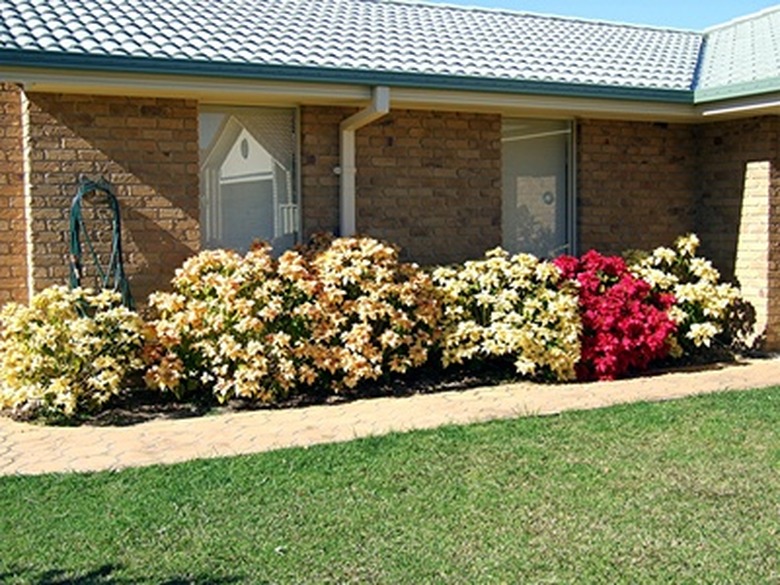Common Plants, Trees And Flowers Found In Mexico
Mexico is home to a wide variety of plants. Cacti, ferns, bromeliads and orchids, as well as palms and magnolias, flourish there. Agave, Mexican sycamore and poinsettia are just a few of the many plants, trees and flowers found growing there.
Agave
The blue agave, also known as the century plant, is native to Mexico and most commonly known for the beverage made from its juice. Tequila is made from Weber's blue agave (Agave tequilana azul). It is a succulent perennial with thick, fibrous leaves that grow straight up from its rosette-type center reaching 6 feet in height.
This plant is utilized for much more than an alcoholic beverage. The fiber from the leaves of the henequen (Agave fourcroydes) and sisal (Agave sisalana) is harvested and used to make fibrous twine. The heart and flower stalk of the plant have a sweet flavor and can be roasted and eaten. Flour is made from the seeds. The sap of Agave salmiana can be fermented and made into pulque, which is similar to beer. It is also used as a natural fence. When multiple agave are planted in a row, they form a barrier that will deter trespassers and livestock alike.
- Mexico is home to a wide variety of plants.
- The sap of Agave salmiana can be fermented and made into pulque, which is similar to beer.
Mexican Sycamore
The Mexican sycamore (Platanus mexicana) is also known as the Mexican plane. It is a large deciduous tree that grows to over 60 feet tall. Mexican sycamore is commonly found throughout wetland areas in valleys and near rivers in northeastern and central Mexico. The star-shaped leaves are large, measuring about 8 inches across. The tops of the leaves are medium green and the bottoms are silvery white. They commonly grow as a split or multiple trunk-type tree with smooth, silver-gray bark. The flower is unremarkable and the fruit is round and bristly. Mexican sycamores are commonly grown as shade trees. They are very fast growing and drought resistant.
- The Mexican sycamore (Platanus mexicana) is also known as the Mexican plane.
- The star-shaped leaves are large, measuring about 8 inches across.
Poinsettia
Poinsettia (Euphorbia pulcherrima) grows naturally in tropical areas of Mexico. In its natural habitat, it is a tall shrub that grows to be about 10 feet tall. The oval leaves are dark green with points along the edges and at the tips. The leaves on the top of the plant or branches are red or white. The plant produces tiny yellow flowers at the top above the red or white leaves.
Poinsettias were known as "cuetlayochiti" to the Aztecs and "crown of the Andes" in Chile and Peru. The Aztec king Montezuma enjoyed the plants so much that he would have them brought by caravan to the area now known as Mexico City. They do not grow naturally at that altitude. Poinsettias are now grown in greenhouses all over the world and sold as a decorative plants at Christmas time.
- Poinsettia (Euphorbia pulcherrima) grows naturally in tropical areas of Mexico.
- The leaves on the top of the plant or branches are red or white.
